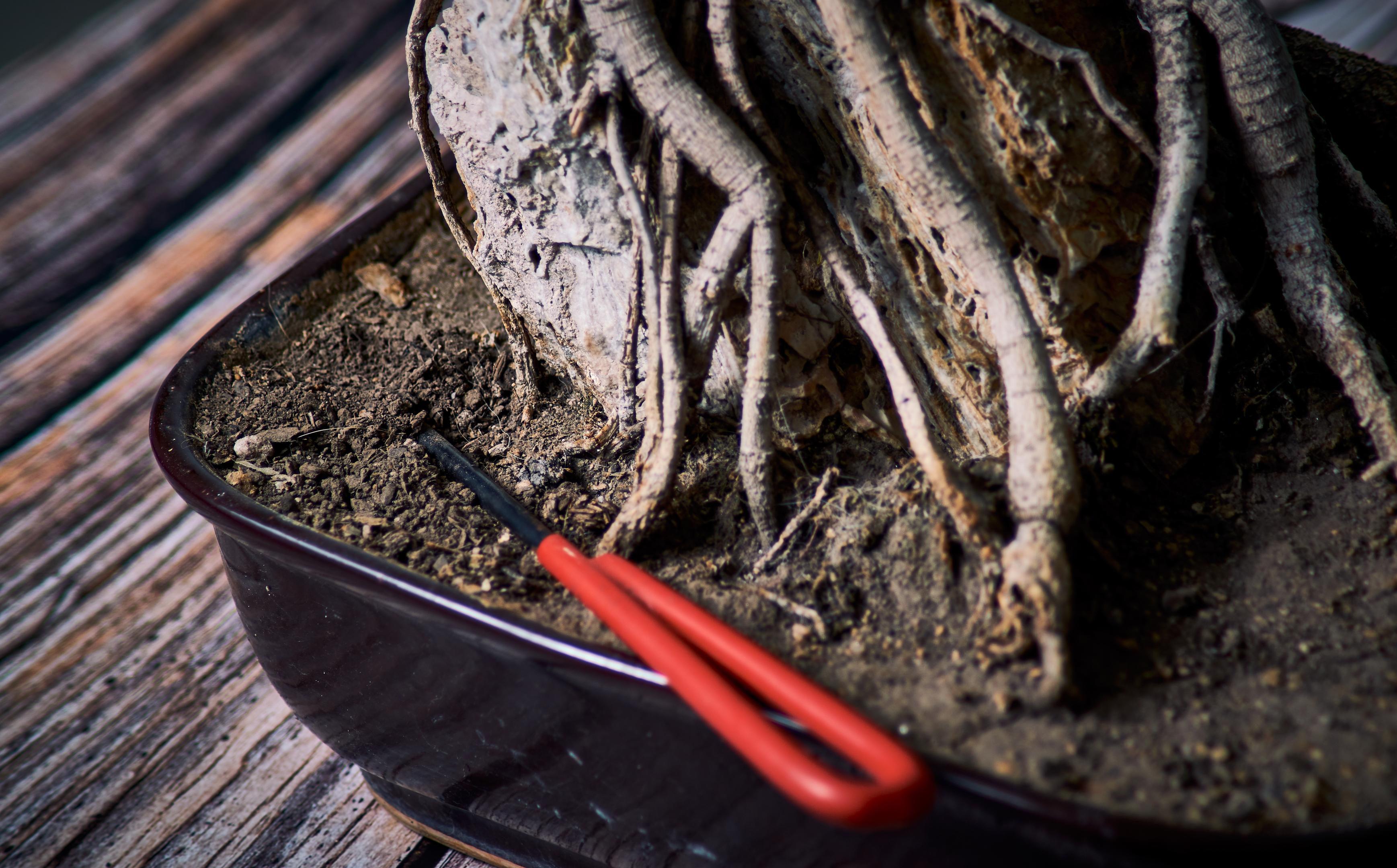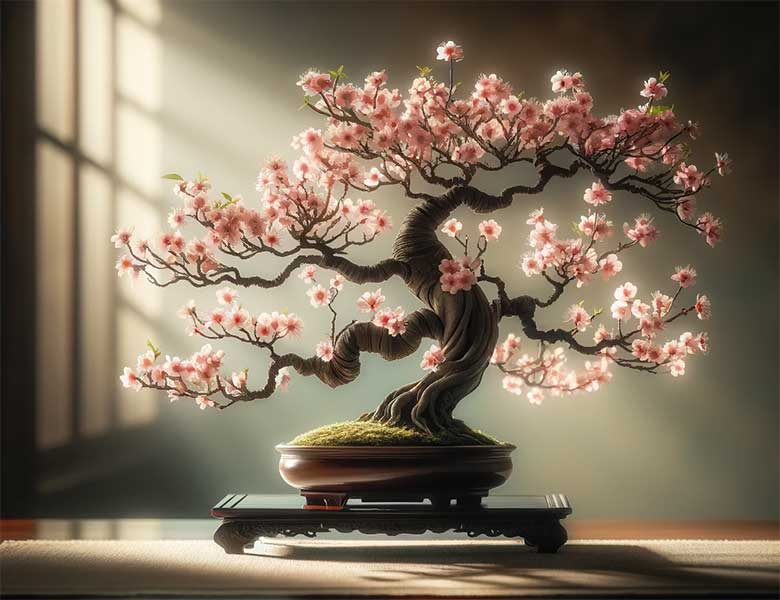In the world of bonsai, few sights are as breathtaking as a cherry blossom bonsai tree in full bloom. These miniature marvels capture the essence of spring, offering a glimpse into the tranquility and beauty of Japanese gardens. Cherry bonsai, also known as Sakura bonsai, embody the art of bonsai cultivation, blending the delicate flowers of cherry blossoms with the ancient practice of growing miniature trees. This blog delves into the allure of cherry blossom bonsai trees, exploring their varieties, cultivation, and the deep cultural significance they hold.
The Charm of Cherry Blossom Bonsai Trees
Cherry blossom bonsai trees, often revered in the bonsai community, epitomize the delicate balance between beauty and meticulous care. These bonsai trees, miniature renditions of the majestic cherry trees, are deeply rooted in Japanese culture, symbolizing the transient essence of life through their fleeting cherry blossoms. Among the preferred varieties, the Prunus serrulata, or Japanese Flowering Cherry, is celebrated for its vibrant pink blossoms that define the Sakura experience. Similarly, the Prunus incisa offers a serene display with its white flowers, enriching the diversity of cherry bonsai trees.
The Sakura bonsai tree, with its profound connections to Japanese traditions, offers more than just aesthetic pleasure; it serves as a living sculpture that embodies the principles of patience, care, and the fleeting beauty of life. As these trees transition through the seasons, from the delicate blossoms of spring to the sturdy branches in winter, they remind bonsai enthusiasts and admirers alike of the cyclical nature of existence. Whether displayed in a garden or as a solitary piece of living art, the cherry blossom bonsai tree continues to captivate with its elegance and the deep cultural heritage it carries.
Cultivation and Care
The cultivation and care of bonsai trees, particularly cherry blossom bonsai, is a meticulous and rewarding practice that mirrors the essence of tranquility and natural beauty. This process is not merely about maintaining a plant but involves a comprehensive understanding of the tree's biology, environmental needs, and aesthetic principles to achieve a harmonious and balanced miniature landscape.
Soil Requirements
The foundation of healthy bonsai cultivation starts with the soil. Cherry bonsai trees flourish in a well-draining, slightly acidic soil mix that supports robust root growth. This soil composition ensures that nutrients are readily available and that excess water can escape, preventing the common issue of root rot that can devastate miniature trees.
Watering Practices
Watering is a critical aspect of bonsai care, especially for cherry bonsai, which are sensitive to both drought and overwatering. The goal is to maintain evenly moist soil, providing hydration without causing waterlogging. The frequency of watering can vary based on factors such as the size of the bonsai, the pot's material, and the ambient temperature and humidity.
Sunlight and Placement
Proper exposure to sunlight is vital for the health and flowering of cherry bonsai trees. They are best grown outdoors where they can receive full sunlight, essential for the development of flower buds and vibrant new foliage. The right amount of sunlight stimulates photosynthesis, leading to stronger, healthier plants capable of producing the iconic cherry blossoms. If you're growing a cherry bonsai indoors where sunlight may be limited, consider using LED grow lights to optimize growth conditions and ensure your tree receives adequate light.
Pruning and Shaping Techniques
Pruning and shaping are art forms within bonsai cultivation, allowing enthusiasts to guide the tree's growth and form. Through careful pruning of branches and leaves and strategic wiring to shape the tree's structure, bonsai practitioners can create a miniature representation of a mature cherry tree in full bloom. This not only enhances the tree's aesthetic appeal but also promotes healthy new growth.
Pest and Disease Management
Keeping bonsai trees free from pests and diseases is crucial for their longevity and beauty. Cherry bonsai trees can be susceptible to spider mites, aphids, and fungal infections like powdery mildew. Regular inspection and prompt treatment using appropriate methods are essential to protect these delicate trees from such threats.
In essence, the cultivation and care of cherry bonsai trees is a holistic practice that integrates botanical knowledge with artistic expression. It is a reflective and meditative journey that rewards patience and attentiveness with the profound beauty of nature, encapsulated in the miniature form of a cherry blossom bonsai.
Seasonal Care for Cherry Bonsai
Caring for cherry bonsai trees involves a keen understanding of their seasonal needs, ensuring they not only survive but thrive throughout the year.
Spring Care
Spring heralds a significant phase for cherry bonsai with the advent of new growth and the much-anticipated flowering period. As the tree awakens from its winter dormancy, it's crucial to monitor its water needs closely, as the developing shoots and blossoms will require more hydration. Fertilization should begin in early spring to support the vigorous growth and flowering, using a balanced, slow-release fertilizer that won't burn the tender new roots and shoots. This is also the prime time for pruning to shape the tree and thin out any dense foliage to ensure light penetrates to the inner branches, promoting healthy growth throughout the tree.
Summer Care
During the summer, cherry bonsai trees continue to grow, necessitating diligent care. Watering becomes even more critical as temperatures rise, and the bonsai may need daily, if not twice-daily, watering to prevent dehydration. Continued shaping and pruning of new growth help maintain the tree's aesthetic form, and pest management is crucial during this active growth period to keep infestations at bay.
Autumn Care
As autumn approaches, the growth rate slows, and preparations for the dormant winter season begin. Reducing fertilization in late summer to early autumn helps the tree transition into dormancy. This is also an excellent time to conduct structural pruning, as it's easier to see the tree's framework once the leaves begin to fall. Preparing the bonsai for winter involves ensuring it is in a well-drained pot to avoid water accumulation and root rot during the colder months.
Winter Care
Winter is the period for repotting cherry bonsai trees, ideally just before they exit dormancy in late winter or early spring. This timing allows the tree to recover in time for the growth spurt of spring. Inspecting the root system and trimming it as necessary encourages healthier, more vigorous growth. Winter is also a time for reflection on the tree's progress and planning any major training or shaping for the upcoming year.
Challenges and Rewards
The cultivation of cherry bonsai trees is a test of patience and skill, presenting challenges such as ensuring the delicate balance of environmental conditions for optimal health and bloom. Older trees require meticulous attention to prevent diseases and maintain their vigor. Achieving and maintaining the perfect aesthetic form through pruning and wiring, while ensuring the tree's health, adds complexity to the care of these miniature trees.
Despite these challenges, the rewards of growing cherry bonsai are profound. They offer an intimate connection with the cycles of nature, embodied in the annual bloom of delicate cherry blossoms that symbolize renewal and the fleeting nature of beauty. The sense of accomplishment in nurturing these trees, coupled with the tranquility they bring to any space, makes cherry bonsai cultivation a deeply fulfilling pursuit. Witnessing the seasonal transformations of these miniature trees serves as a reminder of the beauty and resilience of nature, offering a serene escape from the fast pace of modern life.
Cultural Significance
The cultural significance of cherry bonsai trees extends deep into the heart of Japanese traditions and aesthetics, resonating well beyond the confines of a garden. These miniature trees encapsulate the essence of Sakura, the cherry blossom, which holds a profound place in Japanese culture, symbolizing the transient nature of life, beauty, and the poignant reminder of the fleeting moments of peak beauty and life.
Integration with Japanese Culture and Bonsai Art
Cherry bonsai trees serve as a bridge between the natural landscape and the cultivated art of bonsai, embodying the principles of harmony, balance, and the idealized beauty of nature in miniature form. The art of bonsai itself is a reflection of Japanese Zen Buddhism, emphasizing meditation, patience, and a deep connection with nature, principles that are vividly represented in the careful cultivation of cherry bonsai.
Sakura Festivals and the Celebration of Life
The cherry blossom season in Japan, marked by Sakura festivals, is a time of national celebration, where the blooming of cherry blossoms across the country is awaited with great anticipation. The ephemeral beauty of the blossoms, which peak and fade within a short period, is seen as a metaphor for the fleeting nature of life, reminding observers of the beauty and impermanence of existence. By cultivating cherry bonsai trees, enthusiasts around the globe can evoke the spirit of these celebrations, embracing the cycle of life and renewal in their own spaces.
Cherry Bonsai in Gardens and Spaces
Incorporating a cherry bonsai tree into a garden or interior space is not merely an act of adding a decorative element but is a nod to the deeper cultural and philosophical underpinnings of Japanese art and tradition. These bonsai trees enhance spaces with more than their visual beauty; they bring a sense of peace, contemplation, and a connection to the broader strokes of nature and life's ephemeral quality.
Global Appreciation and Cultural Exchange
The global fascination with cherry bonsai trees underscores a broader appreciation for Japanese culture and the art of bonsai. Cultivating these trees offers a unique way for individuals around the world to engage with and reflect upon Japanese cultural values, fostering a greater understanding and appreciation of this rich heritage. It represents a form of cultural exchange, where the universal themes of beauty, nature, and the passage of time resonate across cultural boundaries.
Cherry bonsai trees are more than horticultural achievements; they are a living tapestry of cultural significance, embodying the delicate balance between art, nature, and the philosophical reflections on life's transient beauty. Through the cultivation of these trees, bonsai enthusiasts partake in a timeless tradition that transcends geography, inviting contemplation and connection to the deeper rhythms of life and nature.
Conclusion
The cherry blossom bonsai tree encapsulates the essence of bonsai cultivation: the challenge of mimicking nature's beauty on a miniature scale, the patience required to shape and care for these trees, and the reward of their breathtaking blooms. Whether you are a seasoned bonsai enthusiast or a newcomer to this ancient art, the cherry bonsai offers a fulfilling journey into the world of miniature trees, one that brings the majesty of cherry blossoms into your home or garden. As you nurture these small trees, you become part of a tradition that celebrates the transient beauty of nature, the discipline of bonsai cultivation, and the enduring allure of the cherry blossom.





